Those expecting Porsche Classic to be housed in a magnificent historic building might be surprised. Instead, you’ll find a modern multi-purpose building in the farthest corners of the Freiberg industrial area – at first glance it could contain building materials or lawnmowers, rather than a home for the great classics of automobile history. But understated excellence is in Porsche’s DNA, and in this case ‘excellence’ is applied to the repair, maintenance, and restoration of all Porsche models out of production for 10 years or more. Think 356, 914, 959, 911 (including 964 and 993), 924, 928, 944 and 968.
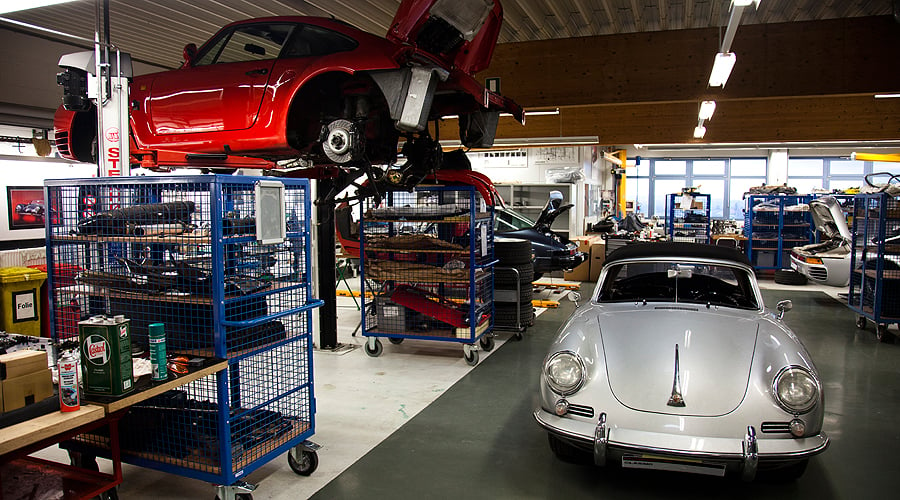
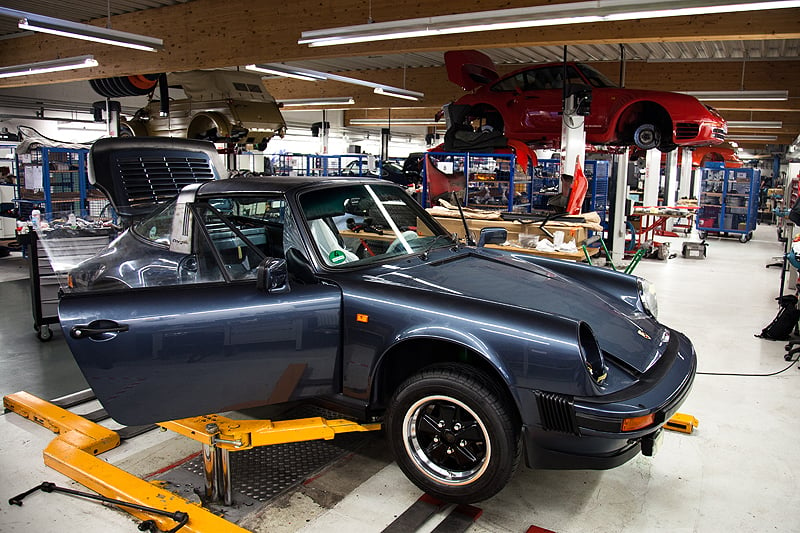
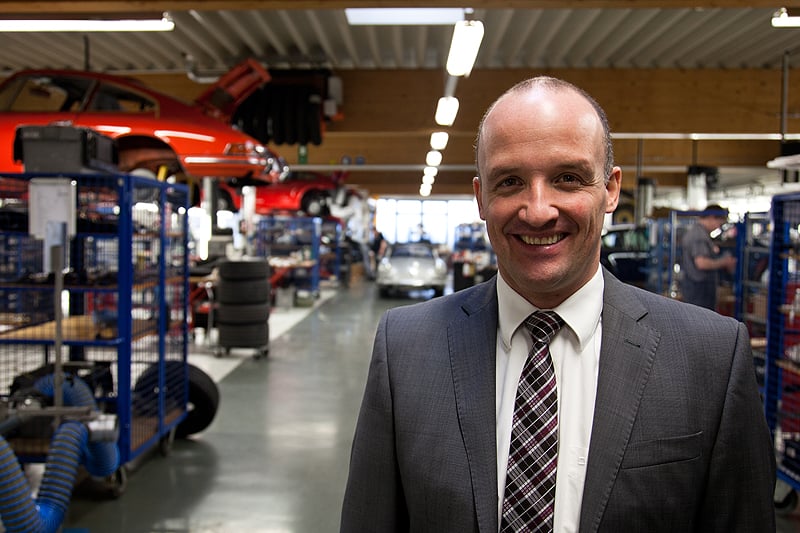
Workshop Manager Jochen Bader welcomes us to the first floor where work is currently underway on half a dozen cars and engines. Each year, around 300 cars are serviced, repaired or restored in the Classic-supervised workshops, including some 15 or so major projects. "Our portfolio ranges from oil changes to the full monty,” explains Bader with a Swabian assurance designed to put even the most demanding customers at ease. “A complete restoration usually takes 12 to 15 months; fully restored Porsches will need about 1,500 hours of work." Our attention turns to the really old models, rather than newer cars like the ‘G-modell’ (G-series). For priceless gems like an early 356, Porsche Classic is the natural destination for the discerning.
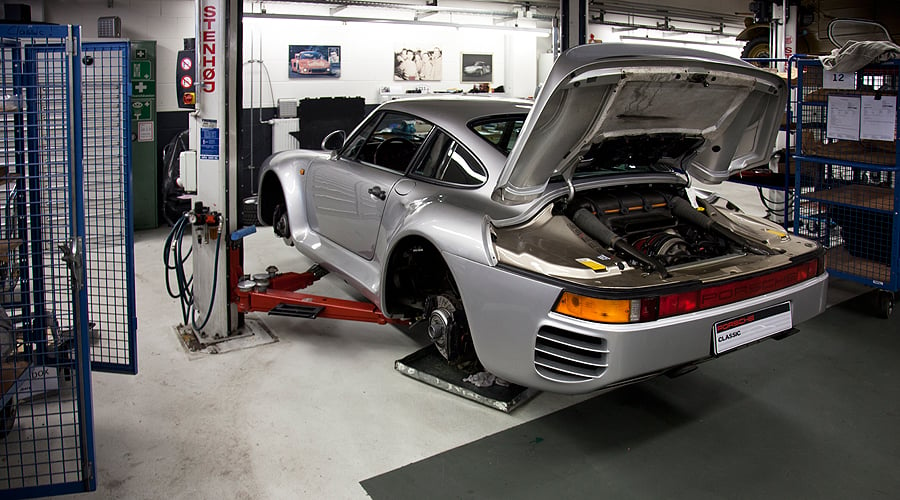
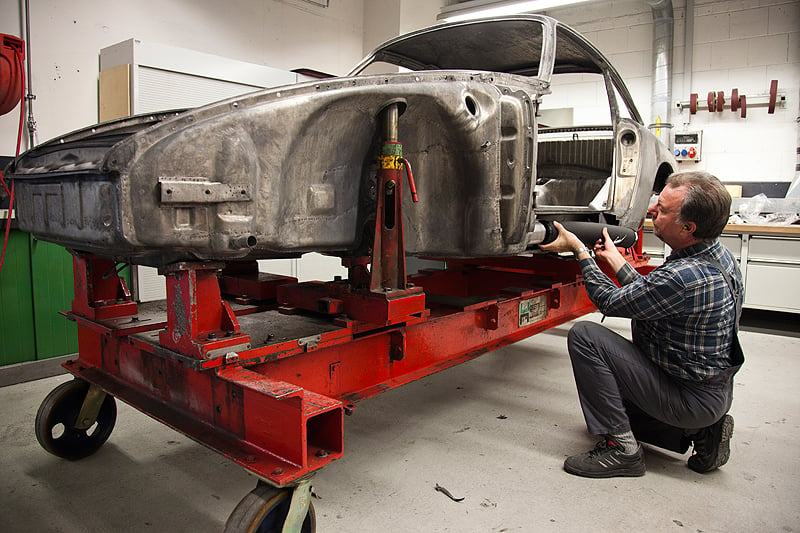
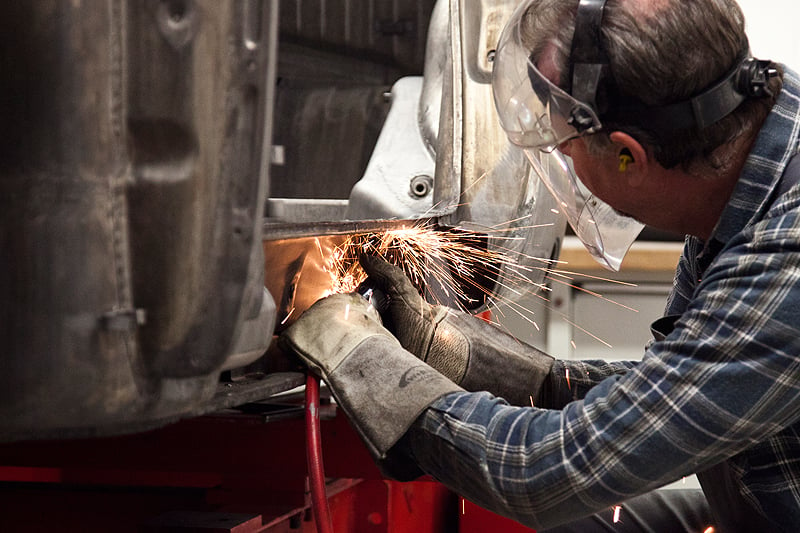
The slightly more modern 959 needs different techniques – aluminium components and Kevlar inlays mean you can’t strip it down like the older models. Quality isn’t cheap: a 959 makeover – e.g. colour change, engine overhaul and new interior – can be quite expensive. On the other hand, there are not many specialists around the globe that can handle the 1980s supercar diva. For full restoration of a 356 or 911 – involving disassembly and reconstruction of the car and, if necessary, engine and transmission – budget at least 150,000 euros. With more than 35,000 original parts, Porsche Classic has an incredible stock; but that is not all: "It is important, of course," says Bader, "that we have all the technical documents and drawings. If something does not exist any more or there are doubts about originality, we can search the archives – and, in the worst case, re-manufacture."
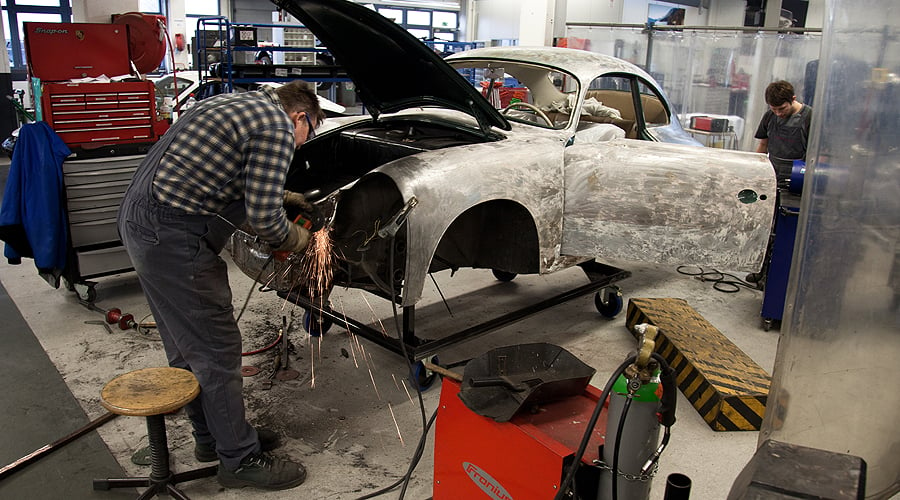
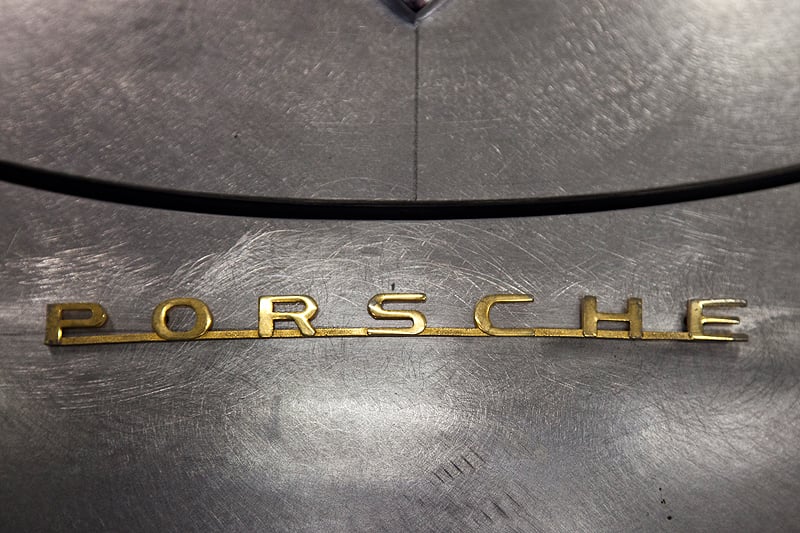
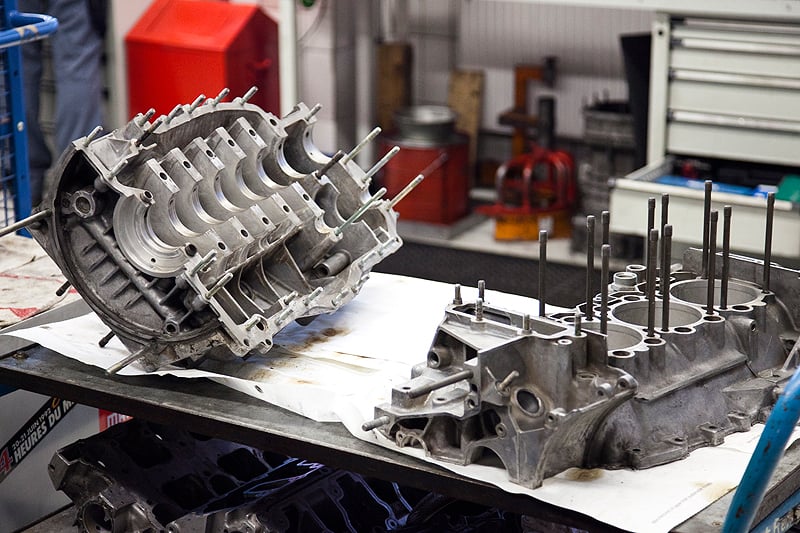
While some of these skills can be provided by other specialists in the market, when it comes to bodywork Porsche Classic has a clear advantage. Original manufacturer parts are, of course, used throughout. Body shells can enjoy cathodic dip painting, offering high corrosion protection not possible when some of these classics were made. Judgements are made about originality versus the opportunities that new technologies bring – based on the experience, as Bader points out, that you get when you’ve completely restored 15 to 20 cars per year.
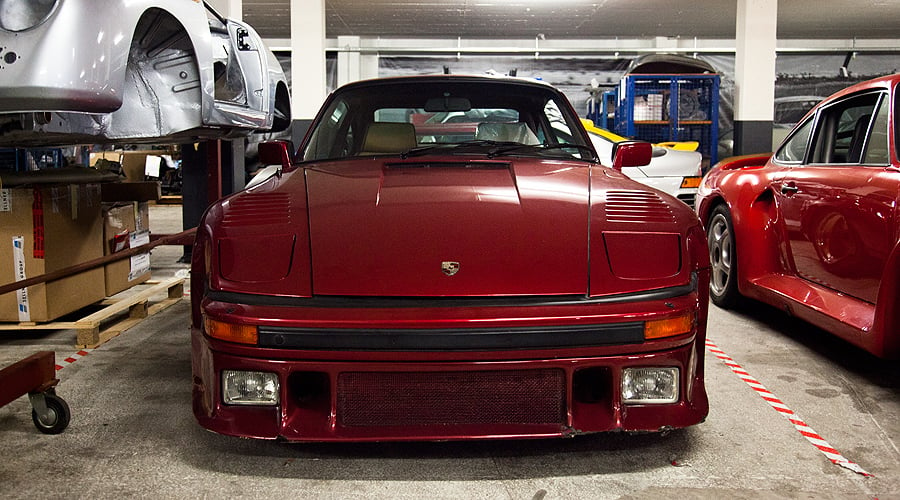
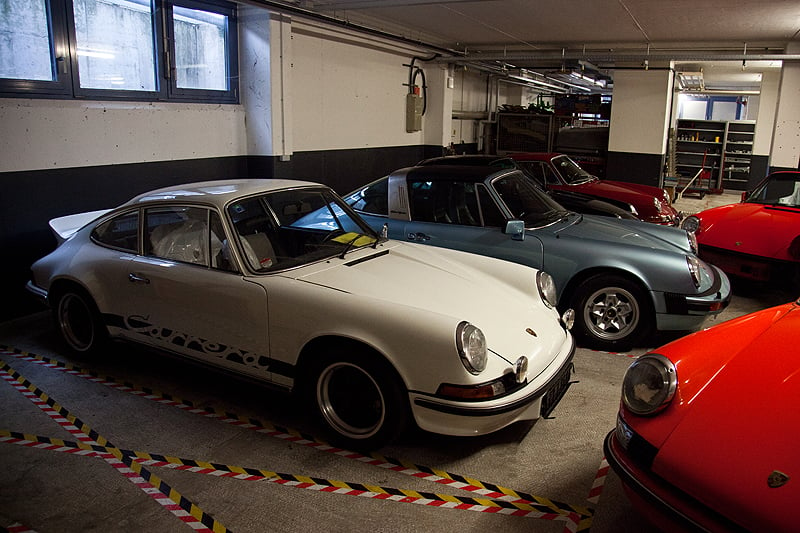
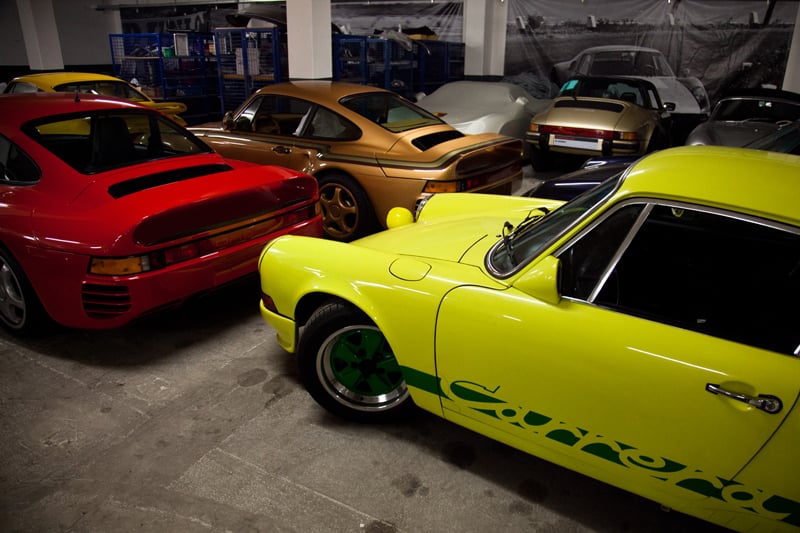
Old cars and new technology are always a balancing act. Porsche Classic’s priority is retaining authenticity. Original tools, original bucks and the knowledge of old data sheets and components are an advantage. The degree of restoration can be a matter of taste, sometimes depending on regional cultures. Advice is given on this balancing act – about the classic car scene, how its tastes have changed over the years, and trade-offs between complete renovation versus the desirable patina of age. Some fundamentalists want every last nut and bolt to be original, while other customers might go for a complete colour change and a new interior. Optimally, the customer retains the value of originality, for example by re-padding seats but preserving the old covers.
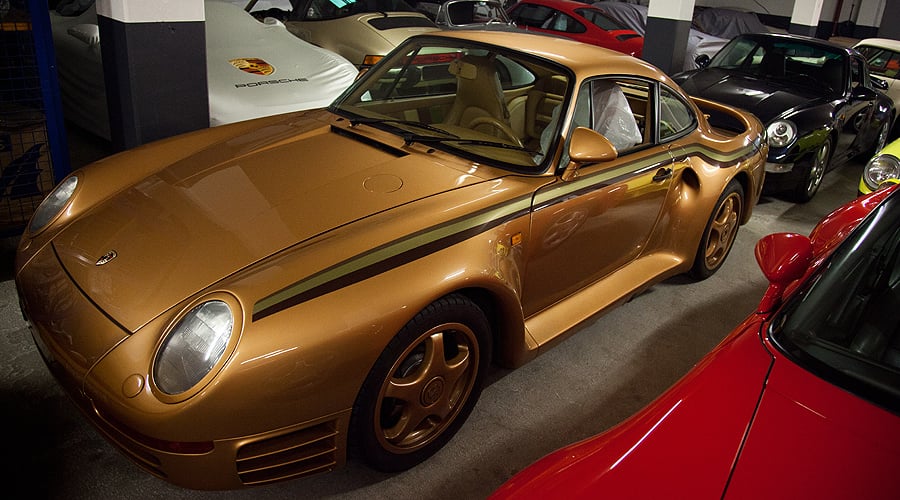
In the basement – “the store” (das Lager) to insiders – lie crown jewels to make any Porsche collector pale. Over two dozen patients are waiting for treatment, including no fewer than six Porsche 959s, two 911 Carrera RS 2.7s, a 935 Street, plus numerous 356 variants. Behind another door lies the 911S from the Steve McQueen classic ‘Le Mans’, auctioned for $US1.4 million last summer at Pebble Beach – and now waiting for a careful restoration by Classic specialists.
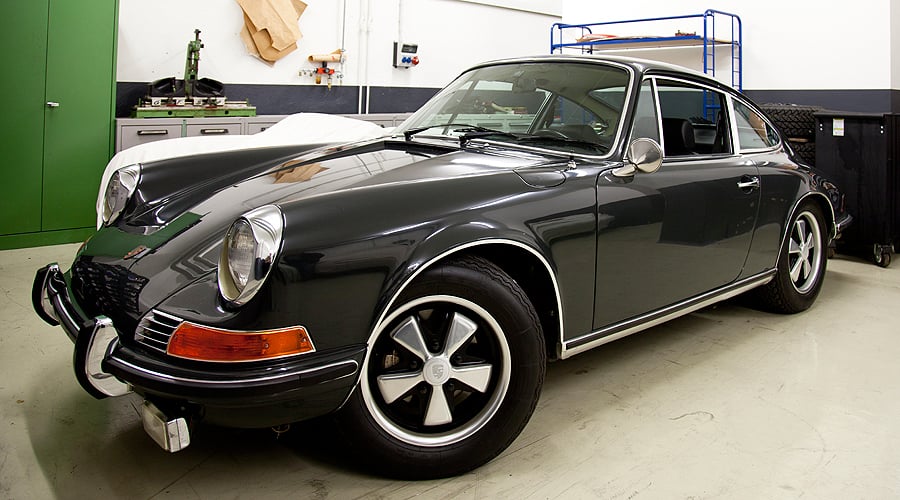
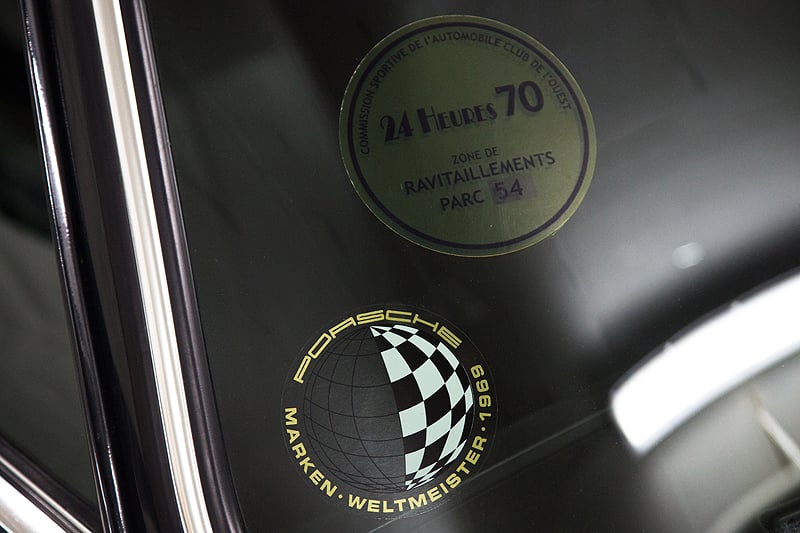
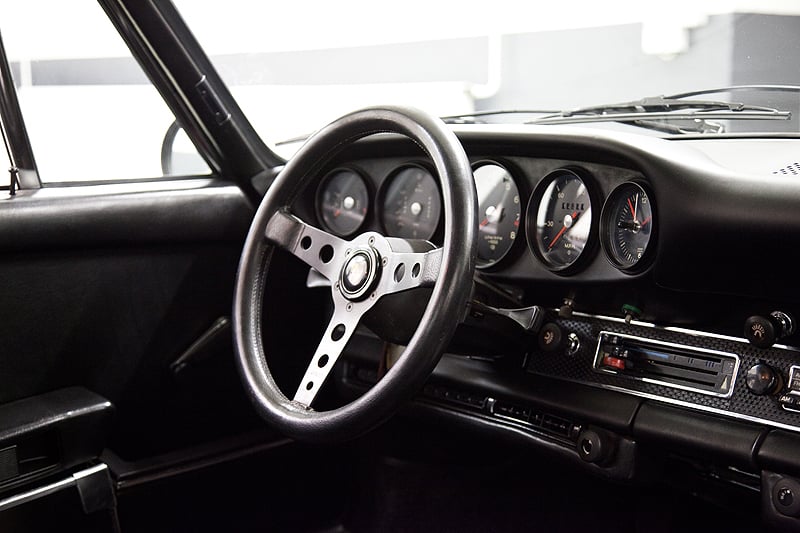
Bader emphasises the resale value his team, and a Porsche Classic warranty, can add to a car’s service history. Documentation of a full restoration includes a box painted in the car’s exterior colour and partly covered with the same leather used in the interior, in which the owner finds a detailed coffee-table book and a DVD containing about a thousand images of the restoration process. One further advantage of the Classic team is that the staff do nothing else – and are therefore highly specialised. They know their area of expertise inside out and could build a 928 or 959 with their eyes shut. After four years of work, a 24-year-old employee can supervise a 959 on his own.
Porsche Classic obviously recruits the best apprentices it can find, and in today’s world it’s important to find the few who prefer classic work to newer, higher-tech stuff. But given the full order books at Porsche Classic, that’s certainly not the worst career decision a gifted apprentice could make.
Photos: Jan Baedeker



















